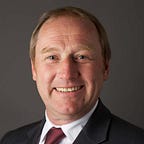World Leaders on Facebook 2018
- How do world leaders and governments connect with their citizens on Facebook?
- Are world leaders broadcasting to their constituents or interacting with their followers?
- Are world leaders responsive to messages from their fans?
- Do world leaders connect with other governments by liking each other’s Facebook page?
These are some of the questions the latest study about World Leaders on Facebook seeks to answer. The World Leaders on Facebook study was conducted by Burson Cohn & Wolfe, a top-three, full-service, global communications agency with deep expertise in digital and integrated communications.
As of March 15, 2018, the governments and leaders of 175 countries had an official presence on the social network, representing 91 percent of the 193 UN member states. The 650 Facebook personal and institutional pages of world leaders, governments and foreign ministries analyzed in this study have a combined total of 309.4 million page likes as of March 15, 2018. Since January 1, 2017 they have published a total of 536,644 posts which have garnered close to 900 million interactions.
Barack Obama was the first world leader to set up his own Facebook page, in March 2007, when he was still Governor of Illinois. Over the past decade, Facebook has become the channel of choice for engaging potential voters during election campaigns. While many politicians discover social media channels during election campaigns, social media engagement has become part of normal government communications.
Indian Prime Minister Narendra Modi has the biggest audience on Facebook, with more than 43.2 million page likes, almost half as many as U.S. President Donald Trump who has 23.1 million page likes on his personal Facebook page.
Donald Trump posts an average of five times per day, more than twice as much as the Indian Prime Minister and, since January 1, 2017, his page has accrued 204.9 million interactions (comments, likes and shares), almost twice as many as Narendra Modi with 113.6 million interactions.
Only a handful of world leaders manage their pages on their own, or post on their timeline themselves. This is generally done by their social media teams. However, there are notable exceptions.
New Zealand’s new Prime Minister, Jacinda Ardern, often posts impromptu Facebook live broadcasts from her home at Premier House and even from her car, updating her followers about the latest government decisions and answering questions as they come in live.
The 37-year-old politician has become the “most loved” world leader since 14 percent of her Facebook interactions are love hearts sent by her followers, which is all part of what has become known Down Under as #JacindaMania. In addition, her videos are now consistently subtitled for the hearing impaired.
Danish Prime Minister Lars Løkke Rasmussen occasionally takes the smartphone into his own hands and posts live videos, including a live New Year’s message at two minutes past midnight as fireworks illuminated the night sky of Copenhagen, or a good night message while eating pizza after a long day at work.
Danish Foreign Minister Anders Samuelsen is visibly having fun on his personal Facebook page. He posts the occasional selfie and short video snippets from his activities, from singing Dancing in the Moonlight with a group of youngsters in the street to driving through the streets of Parisor simply playing with a fidget spinner.
These raw and unedited videos might not have much news value, but they provide a glimpse into “life as the Foreign Minister of Denmark” and are certainly engaging for his 95,000-strong Facebook audience.
Singapore’s Prime Minister Lee Hsien Loong entertains his 1.1 million followers with occasional personal snapshots, often using the hashtag #GuessWhere and encouraging his followers to guess the location where the photo was taken.
Posts which show a personal and often lighter side of world leaders often perform well on Facebook. Much like any other Facebook user, world leaders sometimes share information about their private lives on the platform, celebrating birthdays, sharing pictures of their children and announcing their latest offspring. These personal posts are generally the most popular ones.
Government use of Facebook varies from country to country. While some pages merely broadcast the daily activity of their leaders, others engage with their citizens, replying to the most salient comments and even allowing a free-flow of visitor posts on their respective pages.
Facebook has become the place where citizens can easily send private messages to their government leaders via Facebook Messenger. However, our study has found that few world leaders actually reply to private messages on the platform and many simply use the platform as a one-way broadcasting channel.
With their publications on Facebook, world leaders can now reach an audience of millions of Facebook users worldwide, regardless of the number of likes on their respective pages.
Read the full study on Twiplomacy.com
